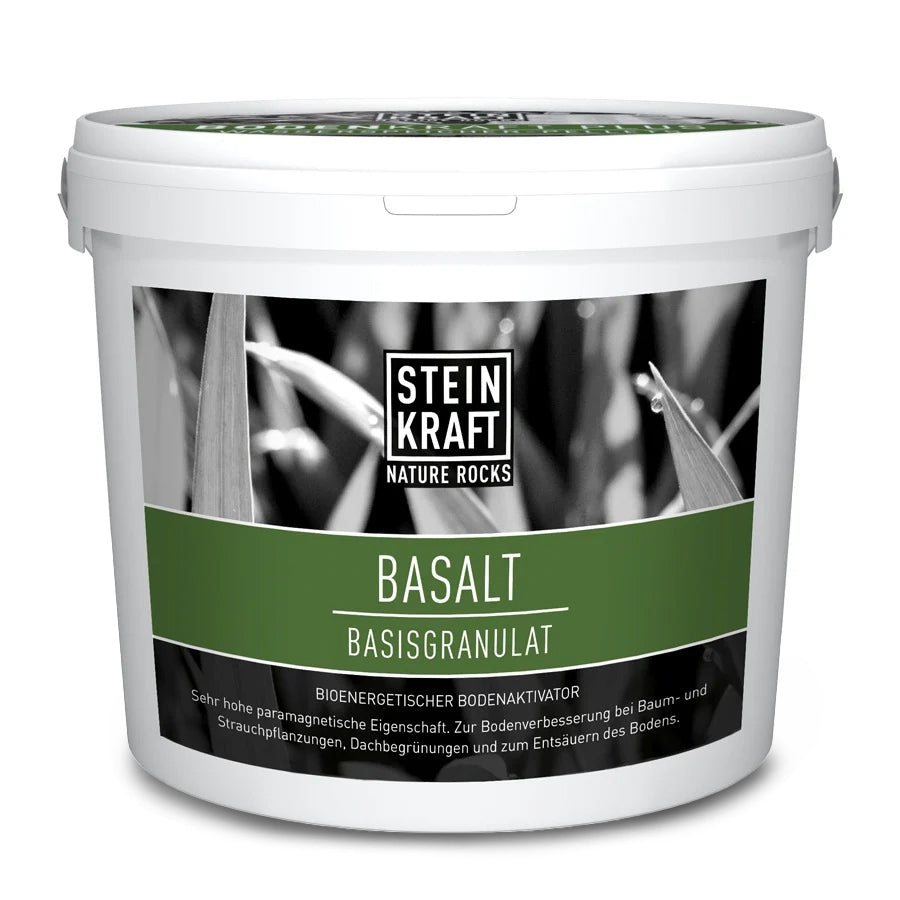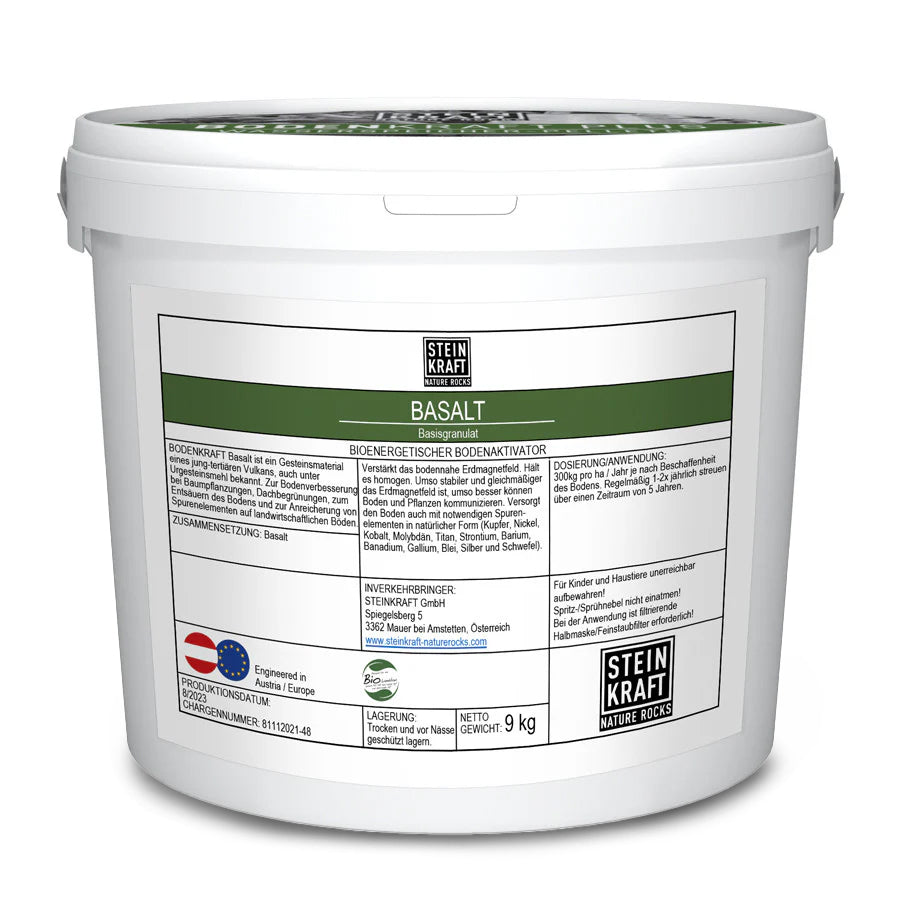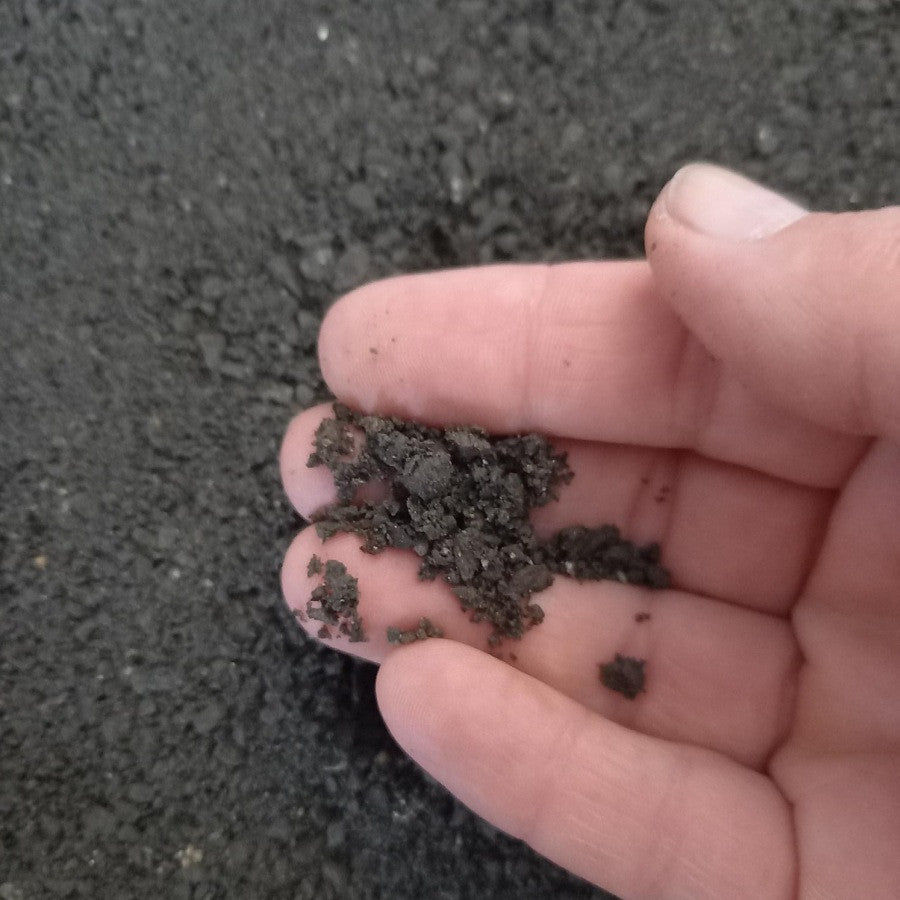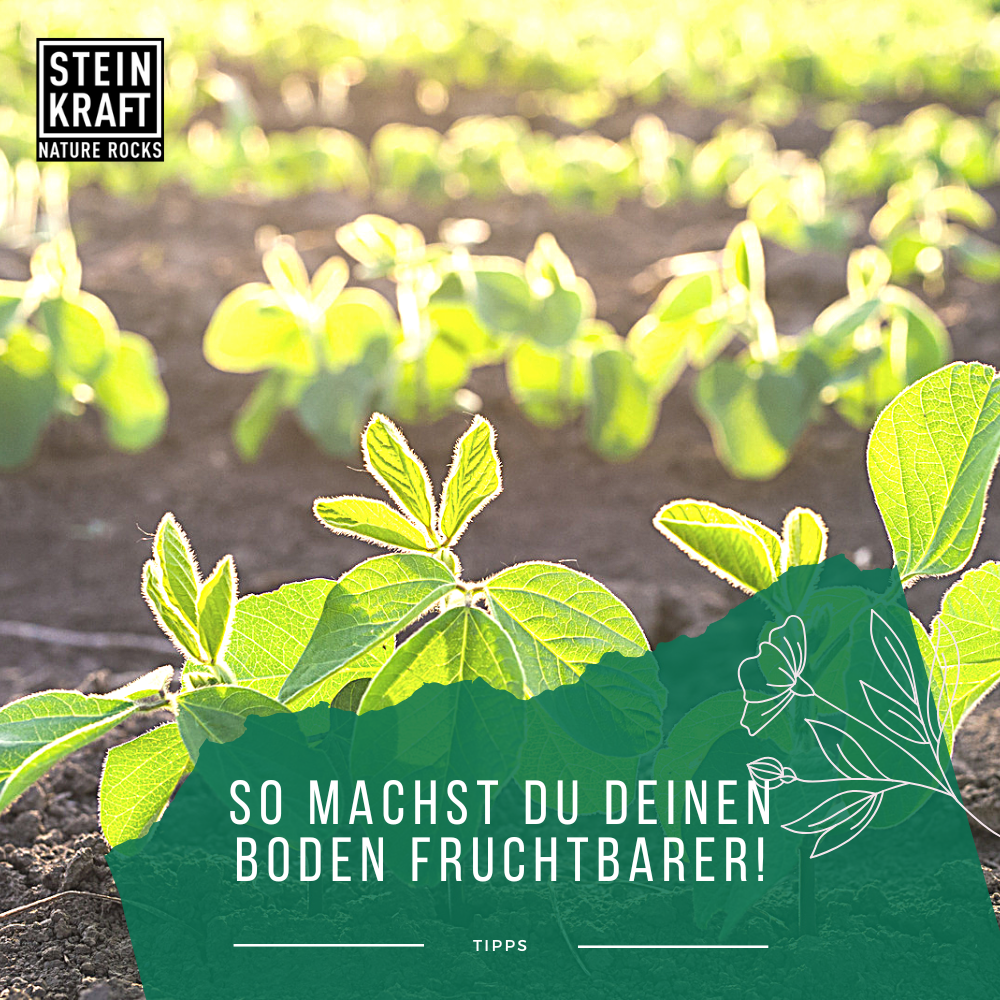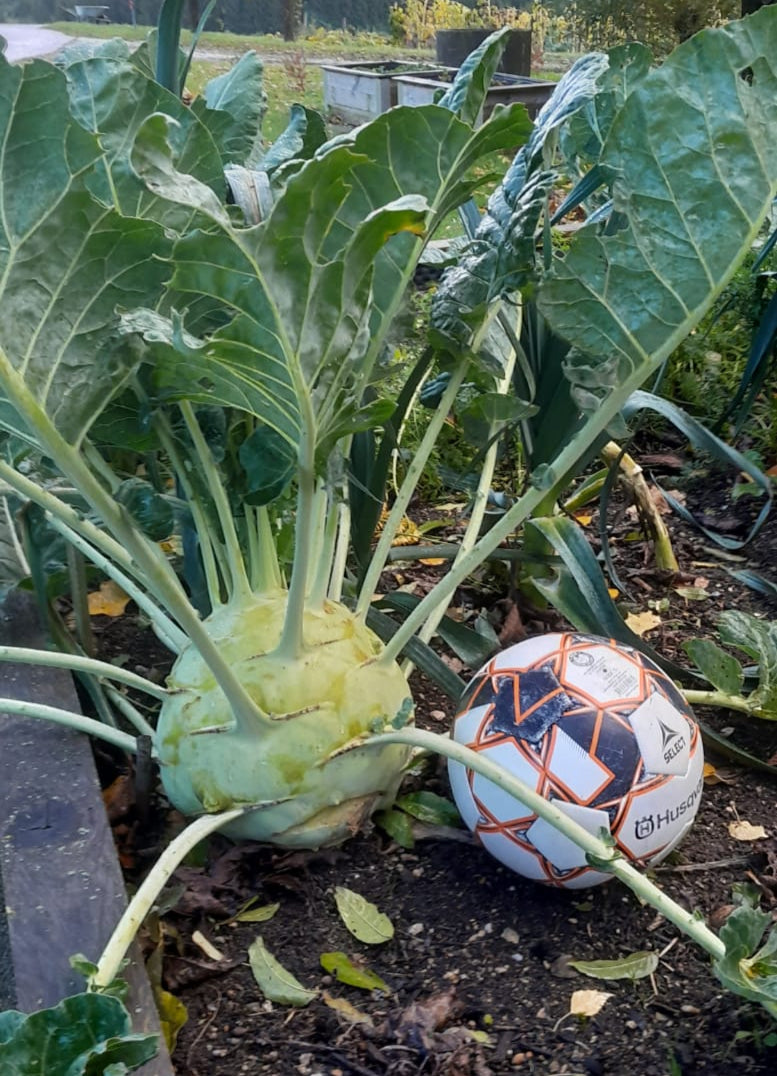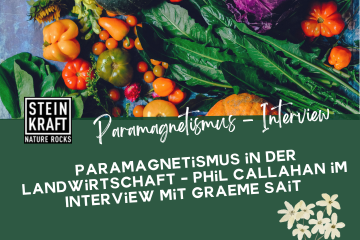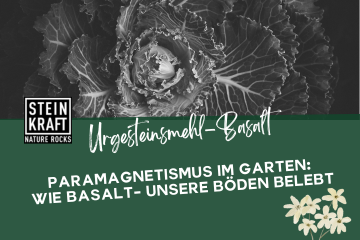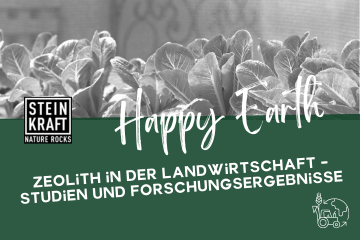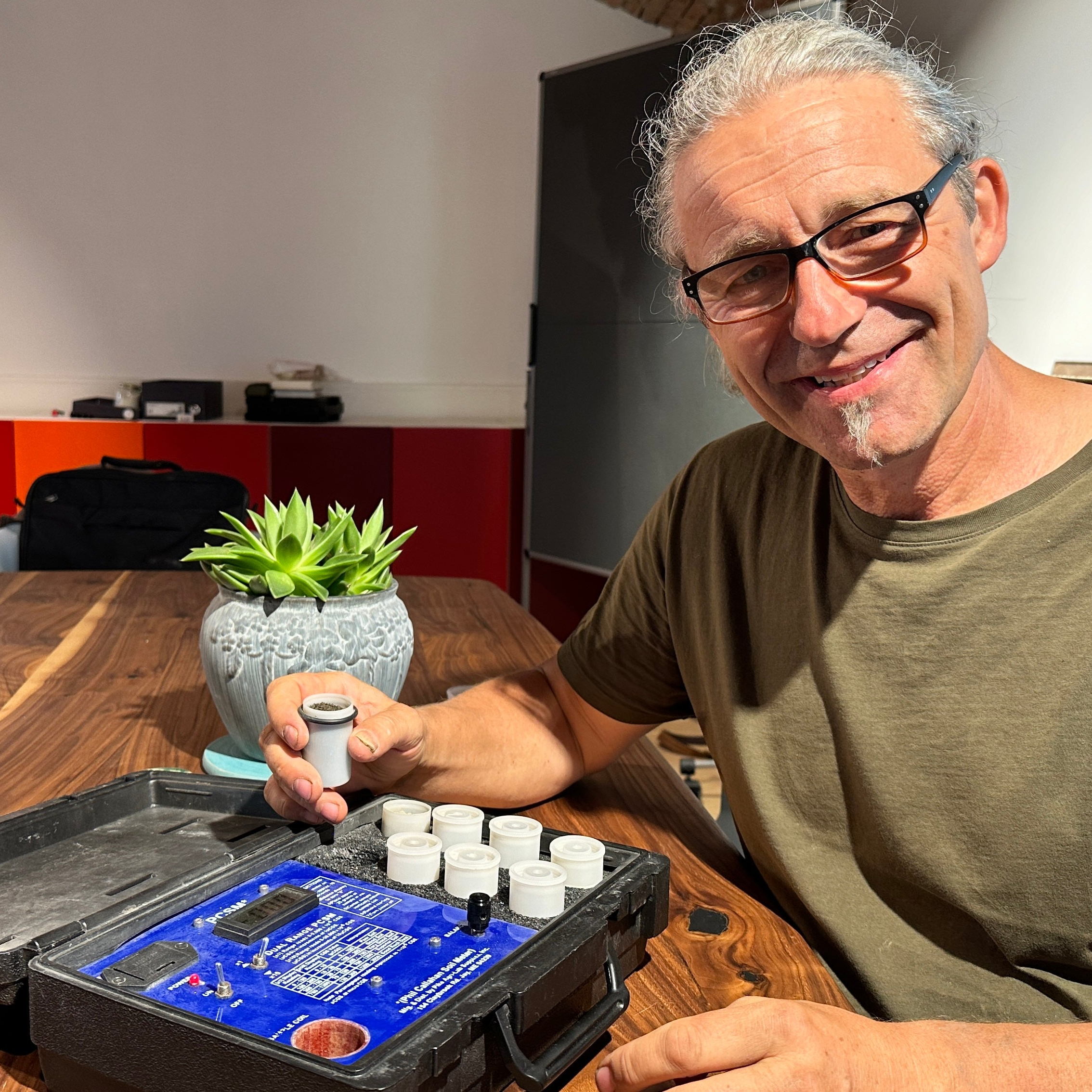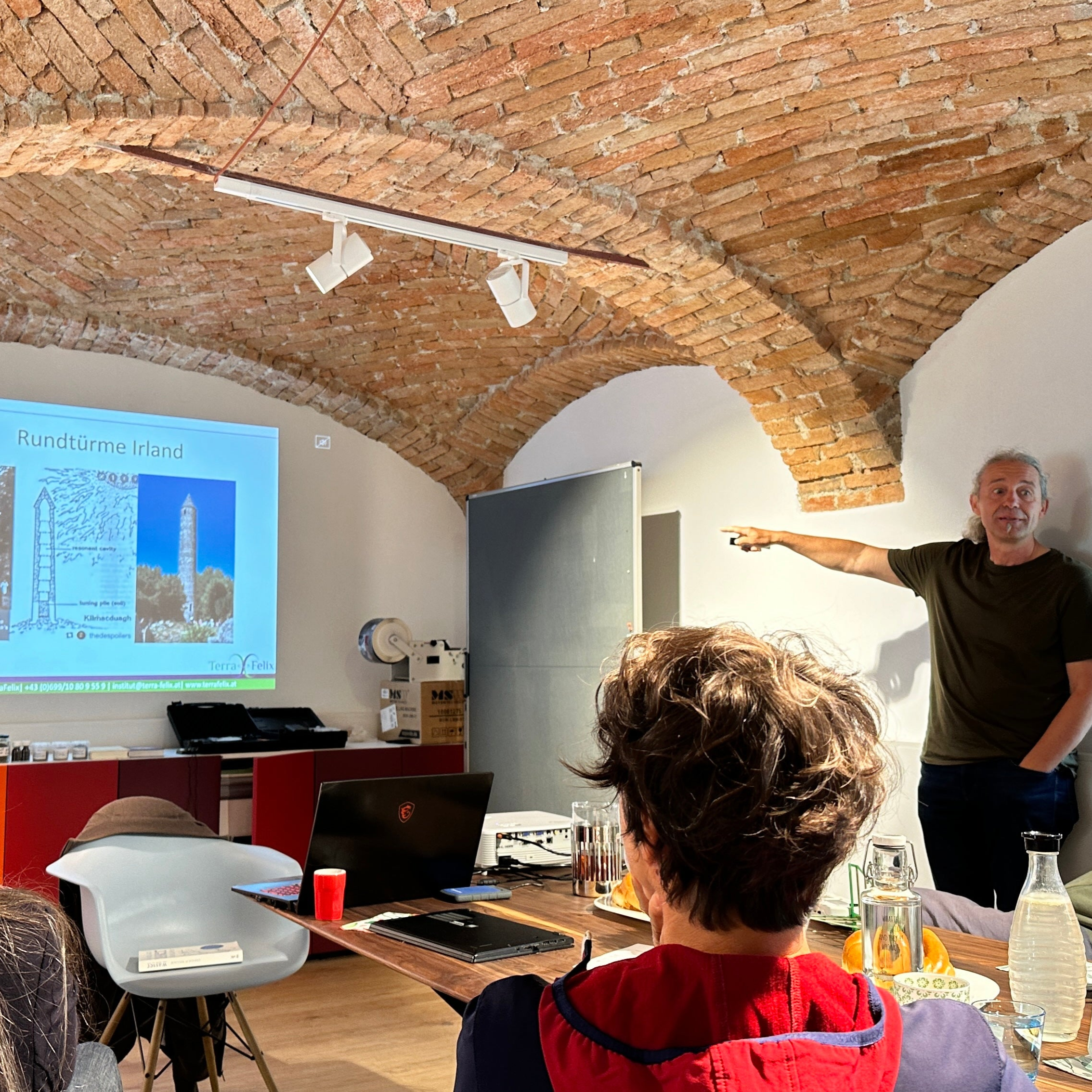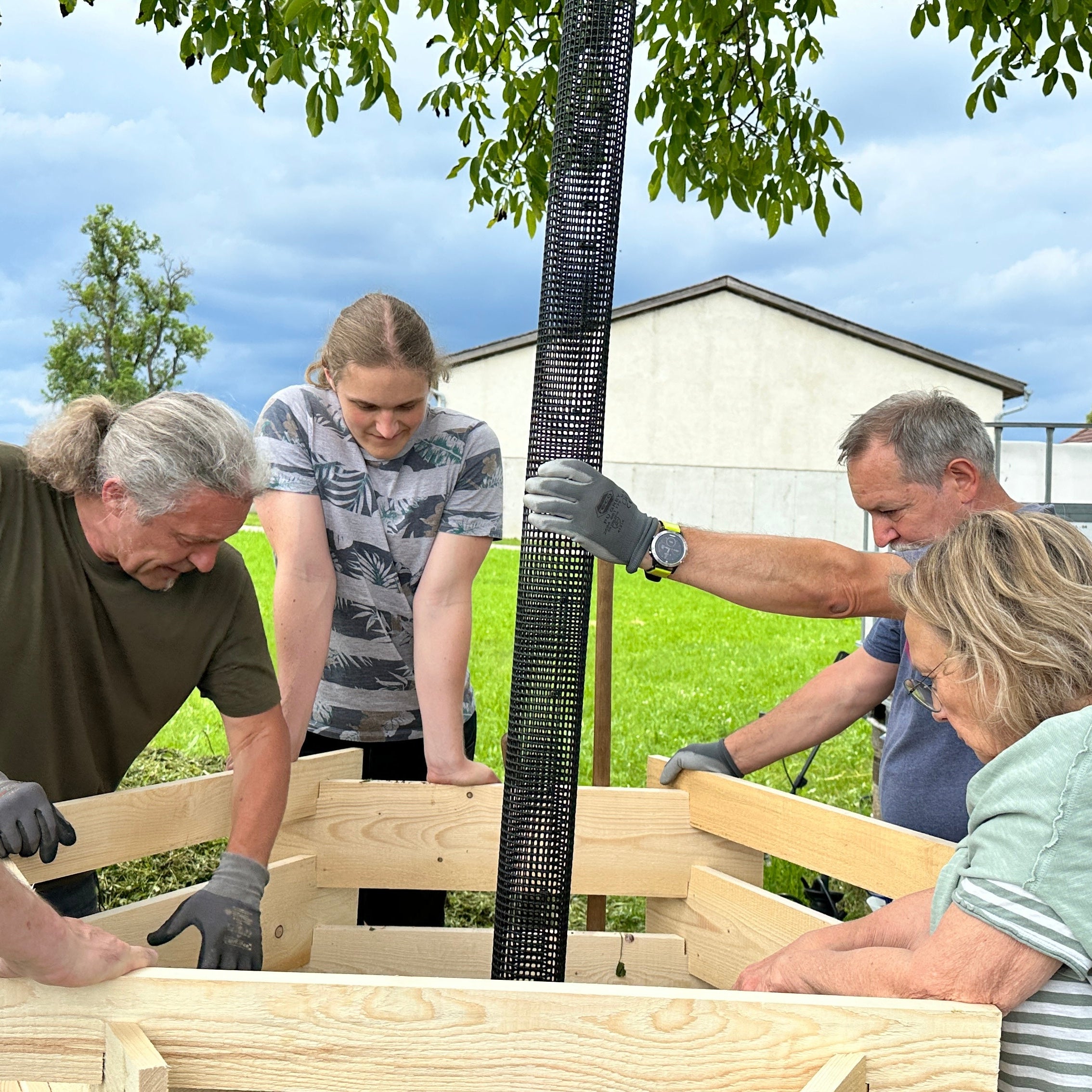BASALT granules 9kg
100% basalt granules with very high paramagnetic properties
Bioenergetic soil activator
natural and vegan
We have packaged the basalt granules in 9kg tubs for easy shipping and to also serve balcony gardeners and home gardeners with smaller quantities.
If you need larger quantities, please contact us directly.

- Regular price
-
€16,20 - Regular price
-
- Sale price
-
€16,20 - Unit price
-
€1,80 per kg
Couldn't load pickup availability
Ingredients
Ingredients of basalt/primordial rock flour:
SiO2 approx. 45%, CaO 11.5%, Fe 8.0%, MgO 8.2%, P2O5 0.1%, Zn 159 mg/kg, Cu 112 mg/kg, Mn 1920 mg/kg
Basalt provides the soil with many necessary trace elements in natural form (copper, nickel, cobalt, molybdenum, titanium, strontium, barium, banadium, gallium, lead, silver and sulfur).
Application / Dosage
How often should basalt be applied to the soil? How much should be applied?
DOSAGE/APPLICATION:
Spread 0.5 kg per m² of garden or lawn 1-2 times a year. Apply a 0.5 cm layer to plant and flower pots.
Recommendation as an additional booster: Use together with STEINKRAFT AM+PLUS Active Microorganisms .
Dosage of basalt/primordial rock flour in the garden:
Work 50-100g per m2 into the soil.
Ideally, use it together with STEINKRAFT AM+PLUS microorganisms . Paramagnetic soils activate the microorganisms. They don't double the microbial environment, but triple it. Three times more microorganisms is already a significant improvement in our soils.
DOSAGE/APPLICATION of the basalt granules:
Spread 1-2kg per m² of garden or meadow 1-2 times a year.
Spread a ring of soil around tree trunks.
Add a 2-3cm layer to plant and flower pots.
Grain size/particle size of the basalt powder
Average grain size 35 microns. At this size, the primary rock flour is quickly available and effective. The finer the particles used to deliver the trace elements, the faster the microbes can break them down and make them available. And that's what we want. We want the many trace elements to be available to our soil as quickly as possible, and then to our vegetables and fruit.
-
Hurry, only 8 items left in stock!
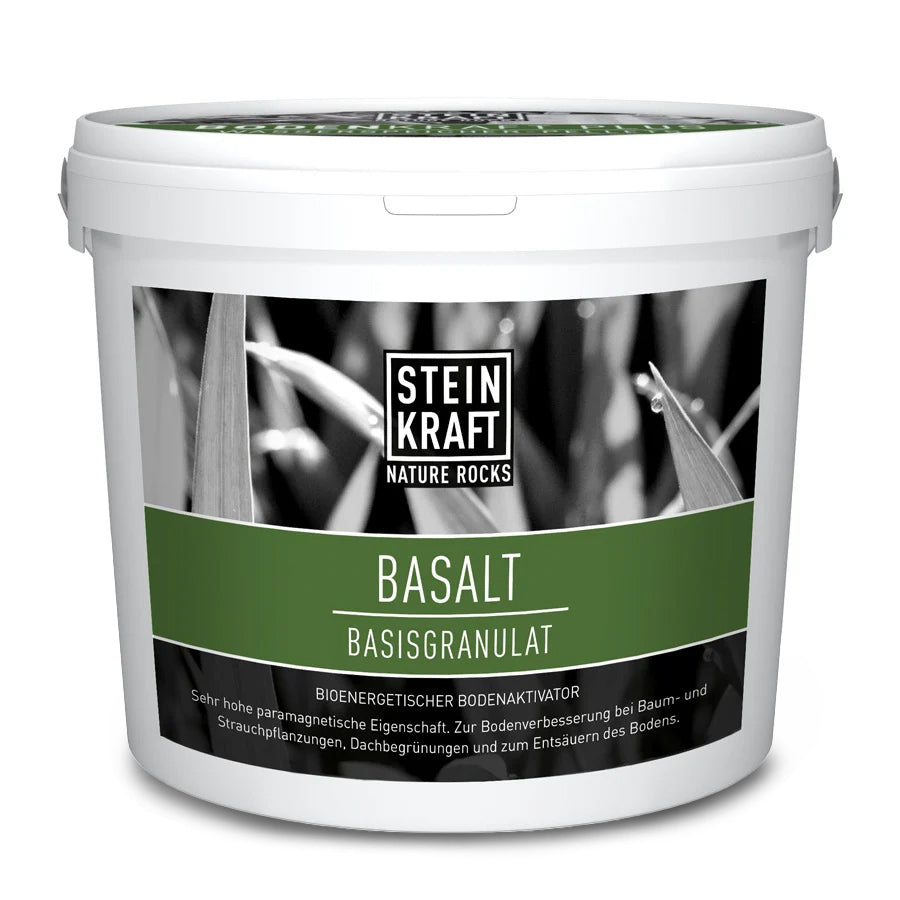
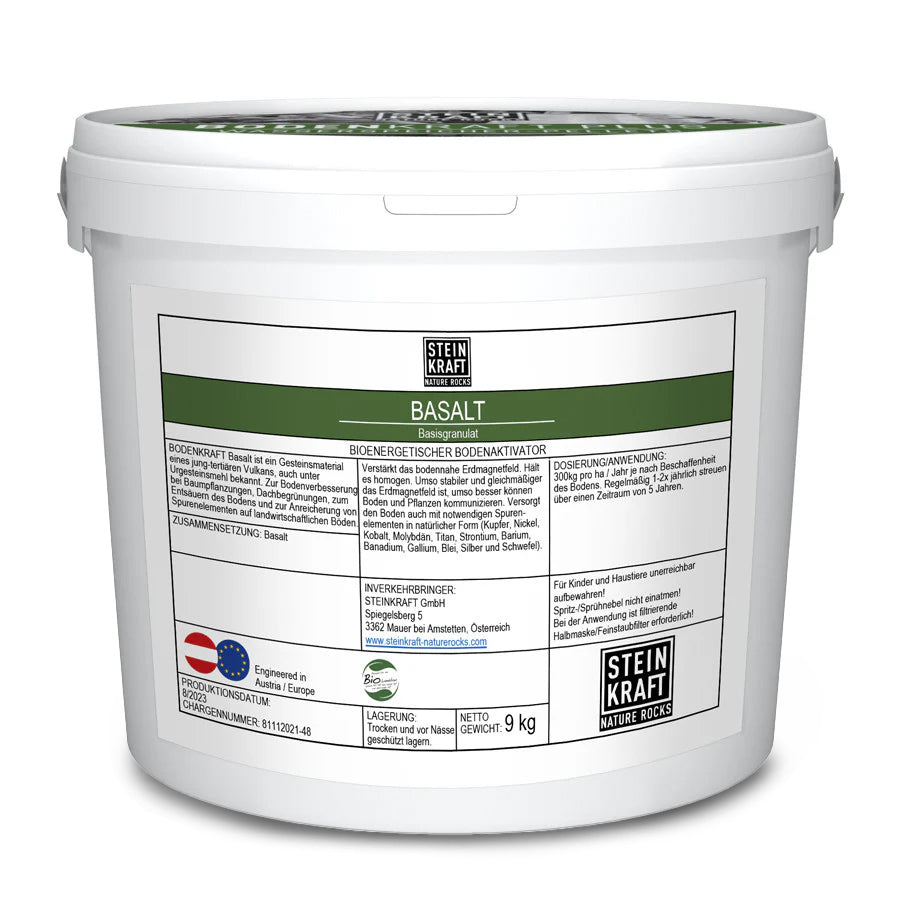
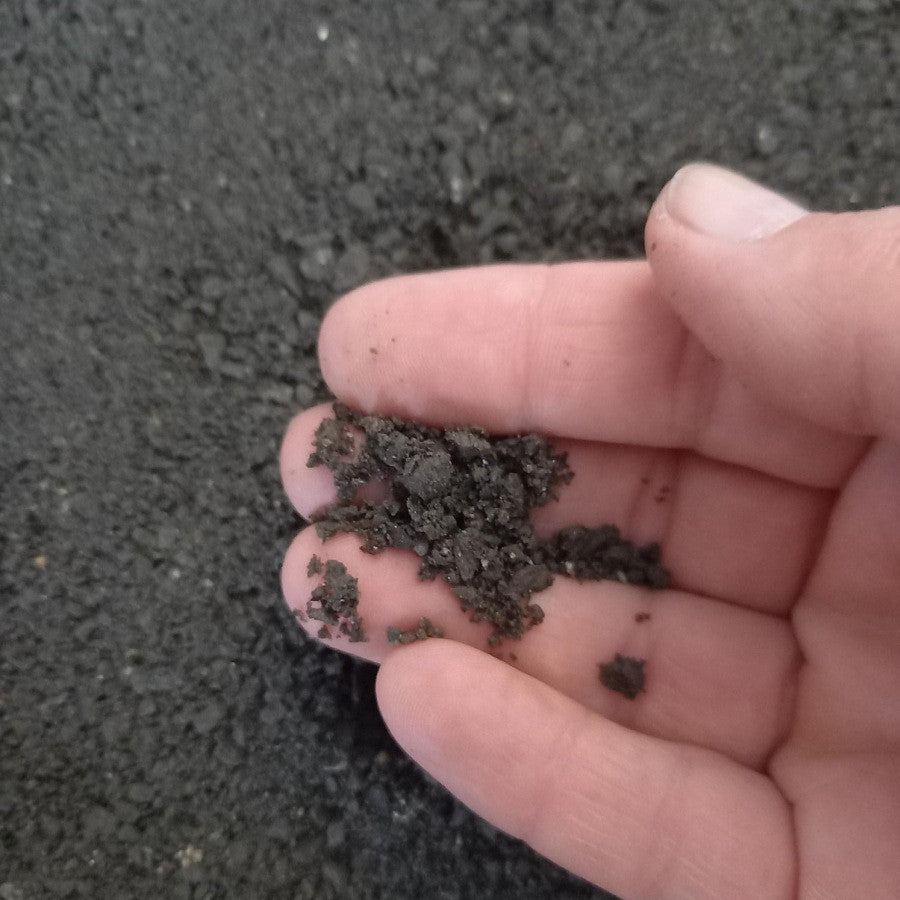
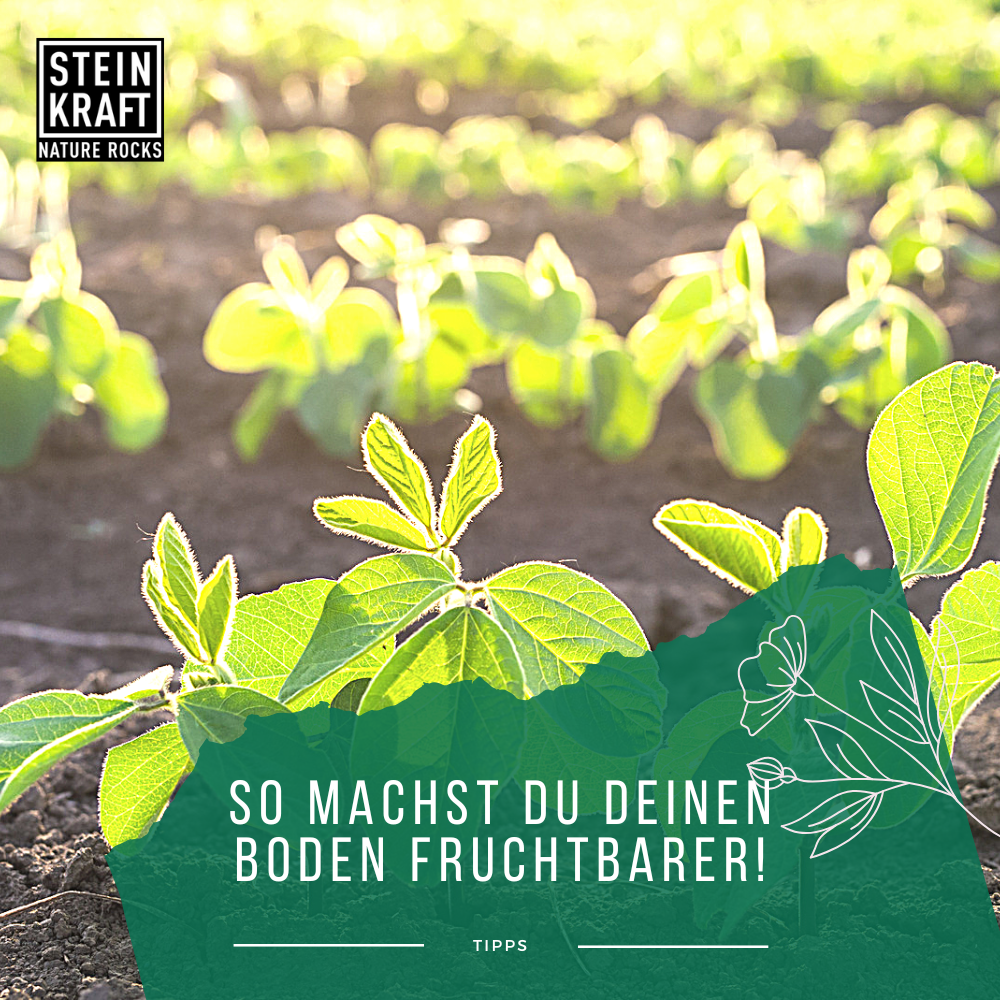

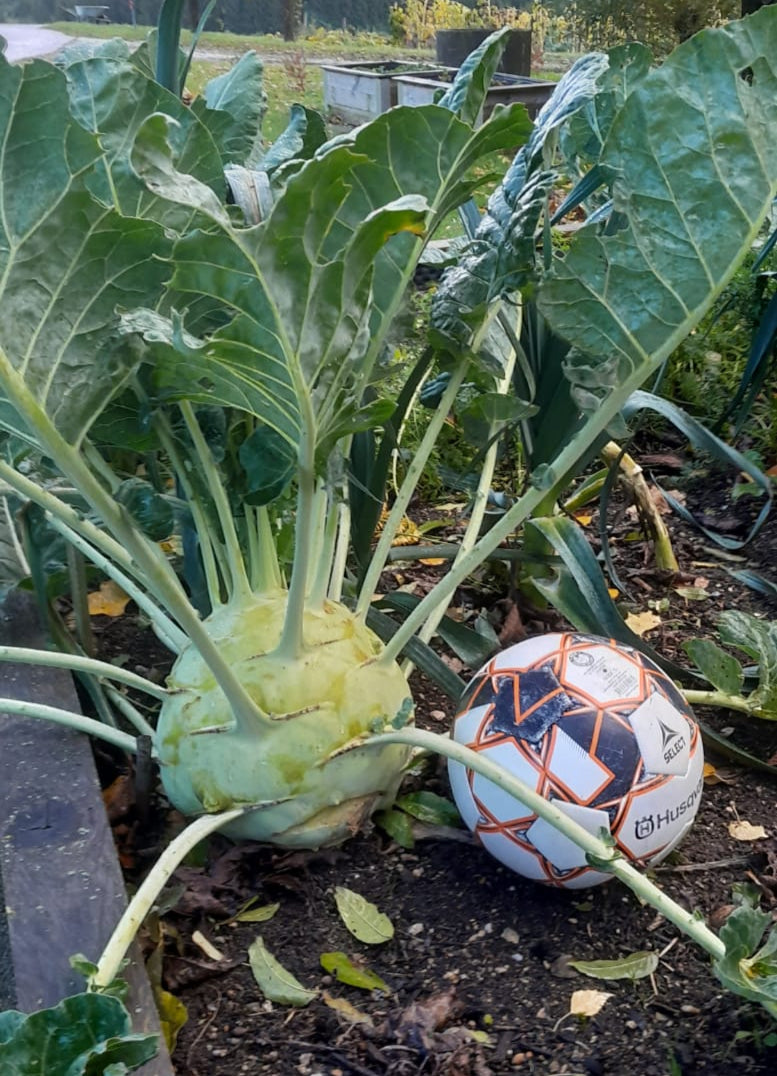
Questions about basalt for healthy soils and answers FAQs
What is basalt/primordial rock flour for fertile soils?
SOIL POWER Basalt is a dark rock material from a late Tertiary volcano, also known as primary rock flour or lava flour. It has strong paramagnetic properties.
Ideal for soil improvement through remineralization in home gardening , tree planting, green roofs, soil deacidification, and trace element enrichment in agricultural soils. The basalt powder ensures sustainable soil revitalization in a short time.
Basalt is a rock material from a young Tertiary volcano, also known as primary rock flour. It is used for soil improvement in tree planting, green roofs, soil deacidification, and for enriching agricultural soils with trace elements.
Strengthens the Earth's near-ground magnetic field and maintains its homogeneity. The more stable and consistent the Earth's magnetic field, the better the soil and plants can communicate. It also supplies the soil with essential trace elements in their natural form (copper, nickel, cobalt, molybdenum, titanium, strontium, barium, banadium, gallium, lead, silver, and sulfur).
What is special about BODENKRAFT Basalt?
The tribomechanically pulverized basalt or primary rock flour strengthens the Earth's near-ground magnetic field and maintains its homogeneity. The more stable and consistent the Earth's magnetic field, the better the soil and plants can communicate. This means that BODENKRAFT Basalt optimally promotes biocommunication between soil and plant. The activated and vitalized soil organisms are then able to optimally utilize the nutrients in the soil. This special primary rock flour revitalizes the soil quickly and sustainably. A true bioenergetic soil activator.
Can paramagnetism be measured?
YES, watch Marcel Reja's YouTube video "How to measure paramagnetism!"
CGS value (=paramagnetic value):
3500
Information and expert articles: More knowledge about basalt and zeolite in agriculture and home gardening
This is what a customer who uses basalt reports - No more snails
Expert knowledge
Who is Phil Callahan? And what is the paramagnetic property of basalt?
Philip S. Callahan was a researcher who, in the 1970s and 1980s, focused on the role of paramagnetism in plant growth and soil health . He postulated that paramagnetic substances, especially in soils, could positively influence plant health and growth.
To summarize, some of his key insights and theories are:
Paramagnetic rocks and soils: Callahan observed that some of the world's most productive soils, such as the basalt soils of Ireland, had a high paramagnetic charge. He concluded that paramagnetic properties in soils could stimulate plant growth.
Antenna theory: Callahan viewed plants as "antennas" that absorb electromagnetic energy from their surroundings. He believed that paramagnetic soils could help transmit this energy to the plants more efficiently.
Application in agriculture: Based on his research, Callahan proposed incorporating paramagnetic rock flour or other materials into soils to improve soil fertility and plant growth. This has led to further research and experimental applications in organic farming.
Callahan's main theses on how paramagnetic materials can stimulate plant growth:
Philip Callahan's hypotheses on the influence of paramagnetic soils on plant growth are fascinating and complex. However, there are some main theories and mechanisms by which paramagnetic soils could stimulate plant growth:
- Energy absorption: Callahan postulated that plants can absorb electromagnetic energy from their environment. Paramagnetic soils could serve as a kind of "amplifier" by concentrating cosmic and terrestrial electromagnetic energies and making them accessible to plants.
- Soil aeration: Incorporating paramagnetic materials into the soil can also improve soil structure, thereby enhancing aeration. Better soil aeration promotes root health and facilitates gas exchange, which can ultimately benefit plant growth.
- Microbial activity: There are theories that paramagnetic soils can promote microbial activity in the soil, which is responsible for the decomposition of organic matter and the release of nutrients for plants.
- Ion movement: Paramagnetism may also influence the movement and availability of ions in the soil. Some theories suggest that this could affect the uptake of nutrients by plant roots.
- Resonance Effects: Callahan also discussed the possibility that plants and paramagnetic soil could "resonate" with each other at certain frequencies, which could lead to improved energy absorption and utilization by the plant.


